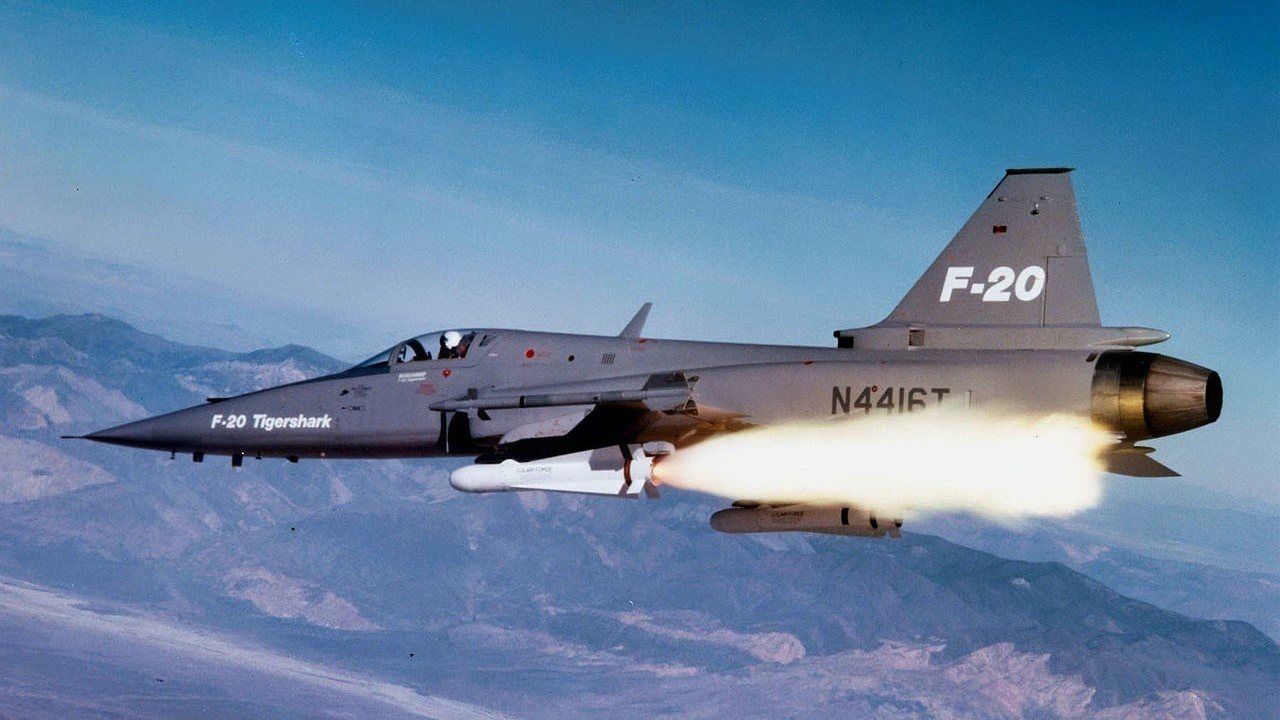F-20 Tigershark: The Fantastic Fighter That Never Had a Chance
When President Ronald Reagan entered office in 1981, he slowly began rolling back Jimmy Carter’s export limitations. As a result, the U.S. began exporting capable and proven fighters like the F-16, and suddenly, there wasn’t much of a market for the F-20. The F-20 program was canceled, with only three airframes having been built.
The F-20 Tigershark was canceled before reaching full-scale production, and it has since faded into obscurity. But the sleek fighter will seem familiar to most aviation enthusiasts, because the F-20 was developed from the more familiar F-5 fighter and T-38 trainer. These aircraft round out a family of Northrop Grumman aircraft with similar and recognizable characteristics.
While it was never produced, the F-20 would have been the most outstanding airframe of them all – the jet incorporated substantial upgrades from the preceding F-5.
The F-20 is best remembered, however, for its relationship to military export policy during the last decade of the Cold War.
F-20: Threading the Export needle
The F-20’s development, for the most part, stemmed from a Department of Defense project named “FX” that aimed to develop and export fighters capable of matching Soviet contemporaries. But the FX program had a catch: The new fighter could not use any technology already in use with any U.S. Air Force aircraft. This was to prevent U.S. technology from falling into enemy hands.
The export limitations that confronted the FX program came from the Carter administration. In the spring of 1977, newly inaugurated President Jimmy Carter announced a policy that limited sales of front-line designs to NATO members, Australia, and Japan. Carter explained that the U.S. could not be “both the world’s champion of peace and the world’s leading supplier of the weapons of war.”
Within a few years, the limitations of the export policy became clear. The Soviets had filled the export vacuum and were selling new aircraft to international clients. This put U.S. allies, who could not counter with the purchase of modern U.S. aircraft, at a disadvantage. They had to rely instead on other vendors, like the French, who exported their Dassault Mirage 2000.
The State Department pushed the Carter administration to develop a modern export option, something comparable to what the F-5 had been in the 1960s and 1970s. After an in-depth study, the administration greenlit the FX program. General Dynamics responded to the FX requirements with their F-16/79, a variant of the F-16A. Northrop responded with the F-5G (later redesignated as the F-20).
F-20 Tigershark Left Behind
When President Ronald Reagan entered office in 1981, he slowly began rolling back Jimmy Carter’s export limitations. As a result, the U.S. began exporting capable and proven fighters like the F-16, and suddenly there wasn’t much of a market for the F-20. The F-20 program was canceled, with only three airframes having been built.

The biggest difference between the F-5E and the F-20 was the latter’s upgrade to a General Electric F404 engine, which was originally designed for the F/A-18 Hornet. The F404 provided 60% more thrust than the combined output of the F-5E’s two General Electric J85s, resulting in a thrust-to-weight ratio that improved from 1.0 to 1.13. The new engine allowed the F-20 to hit Mach 2 and gave it a climb rate of 52,800 feet per minute.
About the Author: Harrison Kass
Harrison Kass is a defense and national security writer with over 1,000 total pieces on issues involving global affairs. An attorney, pilot, guitarist, and minor pro hockey player, Harrison joined the US Air Force as a Pilot Trainee but was medically discharged. Harrison holds a BA from Lake Forest College, a JD from the University of Oregon, and an MA from New York University. Harrison listens to Dokken.
Image Credit: Creative Commons.


